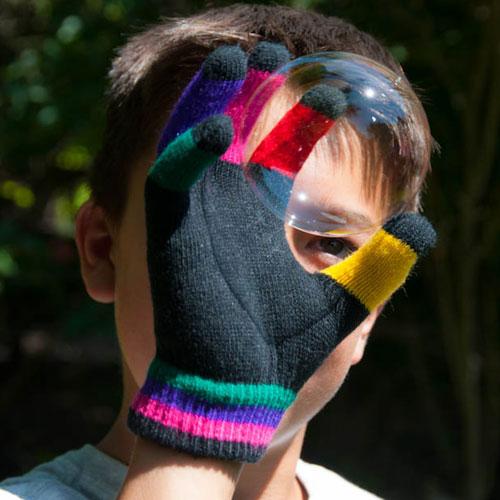Memory Metal
Can a piece of metal have a “memory?” Yes, if themetal is a special alloy of nickel and titanium. It’s calledMemory Metal, and the uses […]

The key to great bubbles is in the bubble solution. The best homemade bubble solution is made with glycerin and dish soap and allowed to age over night.
Strong Bubbles
The lifespan of a bubble is measured in seconds. How do you extend the life of a bubble?
Note: Perfectly good bubbles can be made without adding glycerin, but adding glycerin keeps the water from evaporating and makes the bubbles much stronger and longer lasting.
Blowing Bubbles
Use a small bubble wand. A pipette makes the perfect bubble blower. Cut the end off of a pipette, dip it into the bubble solution and blow through the other end.
Bouncing Bubbles
You now have the best bubble solution. But how do you make them bounce? Regular bubbles pop when they come in contact with almost anything. Why? A bubble’s worst enemies are oil and dirt. A super bubble will bounce off a clean surface free of oil and dirt or anything that won’t break down the soap. Bounce the bubble off your shirt or pants. Use a knit glove.
Bubble Colors
Similar to the way we perceive the colors in a rainbow or an oil slick, we see the colors in a bubble through the reflection and the refraction of light waves off the inner and outer surfaces of the bubble wall. You can’t color a bubble since its wall is only a few millionths of an inch thick. A bubble reflects color from its surroundings.
Square Bubbles
Square bubbles are not impossible if you know a little science. Start with building a cube. Our Square Bubble Maker assembles quickly and works nicely.
More Bubble Fun
ACTIVITY TIME:
This activity can take as long or as short as you’d like. It’s all about exploring and discovering. Blow bubbles for 10 minutes or spend all afternoon experimenting.
Why do you need soap to blow a bubble?
You can blow a bubble in plain water but it won’t last long. For starters, pure water bubbles will evaporate quickly. Second, soap decreases the pull of surface tension, allowing the bubble to last longer.
Soap molecules are made from longs chains of carbon and hydrogen atoms. One end of the chain is hydrophilic, meaning it likes being in water. The other end is hydrophobic, meaning “water fearing” – it doesn’t want to be in water but will attach to grease.
This is how soap cleans…the hydrophobic end attaches itself to the grease on your hand or your dinner plate, letting the water sneak in underneath it. The grease is loosened and surrounded by soap molecules and is carried off with the water during rinsing.
In soapy water, the hydrophobic end does not want to be in the water at all. They work their way to the surface and push out of the water. With the hydrophobic end sticking out the water, the soap film is protected from evaporation. Grease does not evaporate.
Why are bubbles round?
The physicists will tell you that bubbles enclose the maximum volume of air in the minimum amount of bubble solution, so that’s why they are always round. In the Square Bubble activity, as you dip the Square Bubble Maker into the solution, the solution is stretched between the struts and the bubbles cling to the sides of the structure, causing the bubbles to be square.
Thank you to Exploritorium.edu for more information on the science of bubbles.